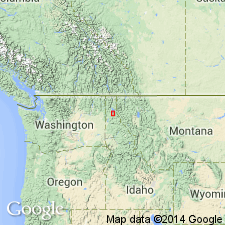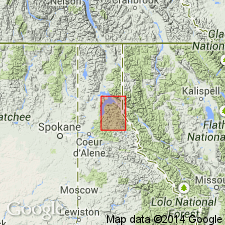
- Usage in publication:
-
- Bayview granodiorite*
- Modifications:
-
- Original reference
- Dominant lithology:
-
- Granodiorite
- AAPG geologic province:
-
- Idaho Mountains province
Summary:
Bayview granodiorite. Light-gray even-grained rock, speckled with very abundant biotite and hornblende crystals. Age is probably Jurassic or Cretaceous.
Named from exposures around Bayview, Kootenai Co., Pend Oreille district, northern ID.
Source: US geologic names lexicon (USGS Bull. 896, p. 130).

- Usage in publication:
-
- Bayview Granodiorite*
- Modifications:
-
- Overview
- Age modified
- AAPG geologic province:
-
- Idaho Mountains province
Summary:
Mapped as part of a unit designated "granitic to dioritic intrusive rocks" of Cretaceous and Tertiary age exposed along Pend Oreille Lake, Bonner Co, ID, Idaho Mountains province. [This map unit includes rocks named and mapped as Granite Creek, Bayview, and Packsaddle Mountain Granodiorites by Gillson (1927).] Positive aeromagnetic anomalies reflect the exposed and buried Cretaceous granodioritic cupolas and stocks. These granodiorite bodies are associated with the Kaniksu batholith. The early Tertiary event is represented by granodiorite and dacite porphyry dikes that followed the faults. The Tertiary event was the final phase of the Kaniksu batholith. The Cretaceous bodies caused extensive metamorphism of Belt Supergroup and of Cambrian rocks.
Source: GNU records (USGS DDS-6; Denver GNULEX).
For more information, please contact Nancy Stamm, Geologic Names Committee Secretary.
Asterisk (*) indicates published by U.S. Geological Survey authors.
"No current usage" (†) implies that a name has been abandoned or has fallen into disuse. Former usage and, if known, replacement name given in parentheses ( ).
Slash (/) indicates name conflicts with nomenclatural guidelines (CSN, 1933; ACSN, 1961, 1970; NACSN, 1983, 2005, 2021). May be explained within brackets ([ ]).

